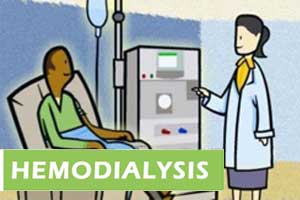- Home
- Editorial
- News
- Practice Guidelines
- Anesthesiology Guidelines
- Cancer Guidelines
- Cardiac Sciences Guidelines
- Critical Care Guidelines
- Dentistry Guidelines
- Dermatology Guidelines
- Diabetes and Endo Guidelines
- Diagnostics Guidelines
- ENT Guidelines
- Featured Practice Guidelines
- Gastroenterology Guidelines
- Geriatrics Guidelines
- Medicine Guidelines
- Nephrology Guidelines
- Neurosciences Guidelines
- Obs and Gynae Guidelines
- Ophthalmology Guidelines
- Orthopaedics Guidelines
- Paediatrics Guidelines
- Psychiatry Guidelines
- Pulmonology Guidelines
- Radiology Guidelines
- Surgery Guidelines
- Urology Guidelines
Low Hb associated with hemorrhagic stroke in hemodialysis patients

In patients undergoing hemodialysis, low concentration of hemoglobin is associated with a high risk of hemorrhagic stroke (but not ischemic stroke), according to a new study published in the journal Nephrology Dialysis Transplantation.
The study was conducted by Ryusuke Yotsueda, Department of Medicine and Clinical Science, Graduate School of Medical Sciences, Kyushu University, Fukuoka, Japan, and colleagues to determine the contribution of the hemoglobin concentration to the incidence of hemorrhagic or ischemic stroke in patients undergoing hemodialysis.
Stroke is a major cause of death and disability in patients undergoing maintenance hemodialysis (HD). Therefore, identifying the risk factors for stroke is urgently needed to facilitate improvements in the prognosis of patients undergoing HD.
For the study, 3436 patients undergoing prevalent hemodialysis were followed up for 4 years. The primary outcome was the first development of hemorrhagic or ischemic stroke. The baseline hemoglobin concentration was divided into quartiles [hemoglobin (g/dL): Q1, ≤9.7; Q2, 9.8–10.5; Q3, 10.6–11.1; Q4, ≥11.2]. The association between the hemoglobin concentration and each type of stroke was examined using the Kaplan–Meier method and a Cox proportional hazards model.
Key Findings:
- During the follow-up period, 2.2% of patients developed hemorrhagic stroke and 4.0% developed ischemic stroke.
- The 4-year incidence rate of hemorrhagic stroke was significantly higher in patients with lower hemoglobin concentrations.
- Compared with the quartile of patients with the highest hemoglobin concentrations (Q4), the multivariable-adjusted hazard ratios for hemorrhagic stroke were 1.18, 1.59 and 2.31 in patients in Q3, Q2, and Q1, respectively.
- No association was identified between the 4-year incidence rate of ischemic stroke and the hemoglobin concentration.
- Compared with the quartile of patients with the lowest hemoglobin concentrations (Q1), the multivariable-adjusted hazard ratios for ischemic stroke were 1.17, 0.88, and 1.10 in patients in Q2, Q3 and Q4, respectively.
"Our results suggest that low hemoglobin concentrations are associated with a high risk of hemorrhagic stroke, but not of ischemic stroke, in patients undergoing hemodialysis," concluded the authors.
For more information click on the link: https://doi.org/10.1093/ndt/gfx305

Disclaimer: This site is primarily intended for healthcare professionals. Any content/information on this website does not replace the advice of medical and/or health professionals and should not be construed as medical/diagnostic advice/endorsement or prescription. Use of this site is subject to our terms of use, privacy policy, advertisement policy. © 2020 Minerva Medical Treatment Pvt Ltd